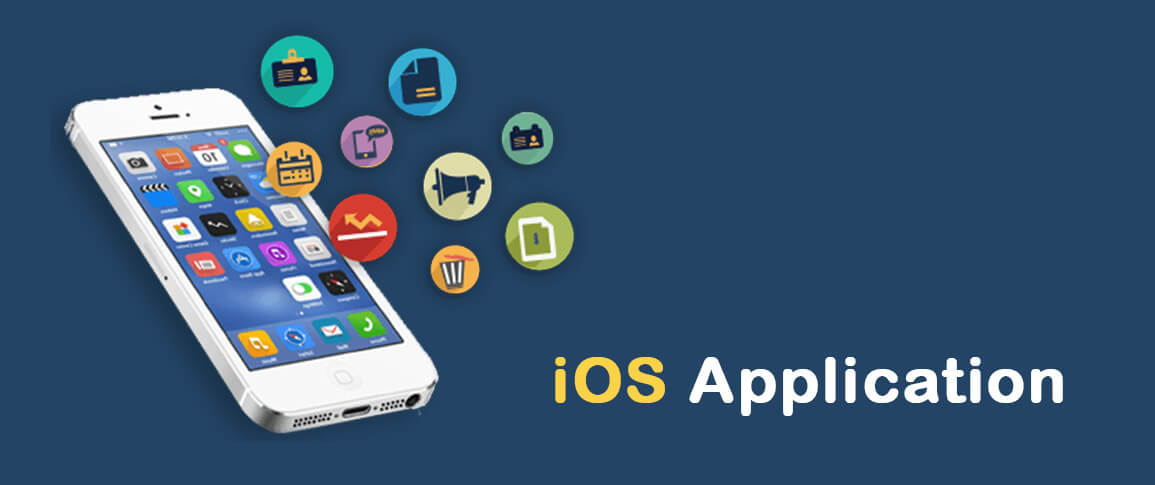Celebrating 14+ years of delivering superb IT services
to businesses worldwide!
Considering that millions of people use iOS devices globally, designing for accessibility is not just the ethical thing to do; it is also a sound business idea.
In iOS app development, accessibility refers to designing and developing apps that can be used by people with visual, auditory, motor, or cognitive impairments. This includes a wide range of factors, like providing alternative ways to use the app and ensuring that the content is readable, usable, and understandable by all users.
iOS apps that are not designed with accessibility in mind can significantly affect users with disabilities. There may be barriers that prevent them from fully engaging with the app and accessing its features. This leads to frustration and disappointment and also prevents a large part of the population from using the app properly.
 In order to create accessible iOS apps, developers must follow certain principles to ensure that all users can navigate, interact with, and understand the content. Perceivable: Include content that can be experienced through sight, hearing, or touch. This involves making sure that text and backdrop elements have enough color contrast, captioning videos, and adding descriptive text to photos.
In order to create accessible iOS apps, developers must follow certain principles to ensure that all users can navigate, interact with, and understand the content. Perceivable: Include content that can be experienced through sight, hearing, or touch. This involves making sure that text and backdrop elements have enough color contrast, captioning videos, and adding descriptive text to photos.
Operable: Make sure that every feature can be used with a variety of input methods, including voice commands, touch, and assistive devices like keyboards and switches. This includes allowing gesture navigation and keyboard shortcuts for users to access the application, as well as making interactive items large enough to be easily tapped.
Understandable: Provide user-friendly interfaces and interactions that are simple to figure out and navigate, irrespective of the user's cognitive ability or experience level. This means using terminology that is clear and simple, offering helpful feedback and directions, and arranging the information logically and consistently.
Robust: To ensure that your apps stay relevant as technology advances, verify that they work with a range of assistive technologies and devices. This includes testing apps with assistive technology to verify compatibility, implementing standard accessibility APIs on iOS, and employing semantic HTML for web content.
Use Semantic Markup: Use semantic features like headings, labels, and landmarks when designing user interfaces to give the content order and context. This makes it easier for users to navigate the program and understand how various aspects relate to one another.
Provide Alternative Text: Provide descriptive alternative text that explains the meaning or purpose of the element for pictures and other non-textual content. By doing this, it makes sure that people who are blind or visually impaired can still understand the material.
Ensure Keyboard Accessibility: Ensure that keyboard navigation is available for all interactive elements in your app. This involves providing conventional keyboard shortcuts for frequently used operations, supplying focus indicators for interactive objects, and guaranteeing that all functionality can be used simply with the keyboard.
Test with Assistive Technologies: To make sure that your software is usable by individuals with disabilities, test it frequently using assistive technologies like VoiceOver, Switch Control, and Voice Control. Observe how the application appears to users who have enabled different levels of accessibility, and make any required changes to enhance the user experience.
Consider Color Contrast: For text to be readable against a background, consider color contrast ratios while creating the user interface for your program. To ensure that text is readable by people with low vision or color blindness, try to maintain a minimum contrast ratio of 4.5:1 for standard type and 3:1 for large text.
Provide Customization Options: Allow the users to alter the look and feel of the app to better fit their own requirements and tastes. This might include the ability to change the font size, select highly contrasted color schemes, and enable or disable effects and animations.
Designing for accessibility is not only a moral obligation but also a legal requirement in many countries. It is possible to make iOS apps that are inclusive and empowering for all users by giving accessibility top priority during the development process. Incorporating accessibility into its design process is a core value of Globosoft, a leading company specializing in iOS app development in Cochin. Globosoft is committed to inclusivity and makes sure all of the apps it develops meet the highest accessibility standards, which allows all users to utilize and benefit from them. Together, let's build a more inclusive digital world where everyone can participate fully and equally.

Web design should be three things: human-centered, compelling and future-proof.
Enquire NowGrowth of your business has a lot to deal with tactical and effective SEO.
Enquire NowGive us a hint on what your business stand for and we will develop for you astate-of-the-art..
Enquire NowIn the digital era, Enterprise cloud governance essentiallydeals with applying specific policies ..
Enquire Now